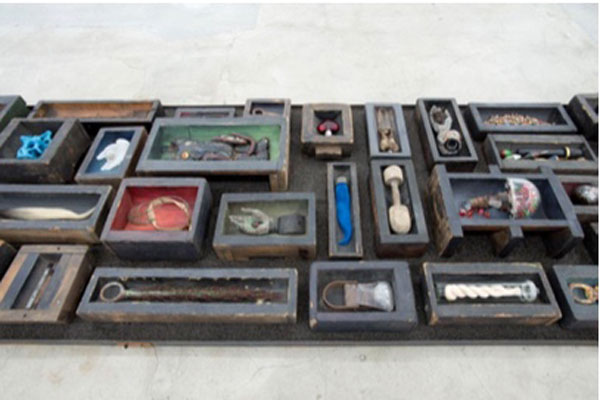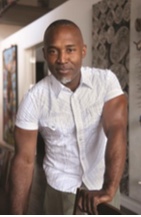
Nick Cave, American (b. 1959). Property, 2014. Mixed media including found and fabricated objects: iron shoeshine chair, vintage molds, thistle seed, concrete figure, ceramic birds, perfume-bottle birds, metal flowers, and strung beads, 92 × 239 1/2 × 53 inches. Purchase: William Rockhill Nelson Trust through the George H. and Elizabeth O. Davis Fund, 2014.50.1-240. Photo by James Prinz Photography. Courtesy of the artist and Jack Shainman Gallery, New York.
Beginning July 23, visitors to the Nelson-Atkins Museum of Art can view a new sculpture by Missouri-born artist Nick Cave who attended the Kansas City Art Institute and has acquired a national reputation.
The museum says the sculpture Property, like Cave’s other works, “explores issues of race, gender, oppression, identity and history. The expansive assemblage incorporates about 1,000 found objects that reference race and racism, recall African American life or hold strong personal meanings for Cave.”
When he was growing up in Fulton, Missouri, Cave began making his own clothing. He studied fashion and textiles at the Kansas City Art Institute in the late 1970s and early 1980s, as well as designing costumes for and participating in performances at the Alvin Ailey Dance Theater. He became know for his Soundsuits, described by the History Makers this way:
These sculpted, full body “soundsuits” are layered and textured in metal, plastic, fabric, hair, and objects designed to rattle and resonate in concert with the movement of the wearer, usually Cave himself. The suits represent Cave’s feelings about the isolation and insulation attendant to being a African American man in America.
“Cave has said that once he is disguised by one of his Soundsuits, he is free to become something other,” said Leesa Fanning, curator of Contemporary Art at the Nelson-Atkins. “He has always been fascinated by the psychologically transformative experience of surrendering and creating a new being.”
Cave currently lives in Chicago and is the chair of the Department of Fashion and Design at the School of the Art Institute of Chicago.




Who’s talking